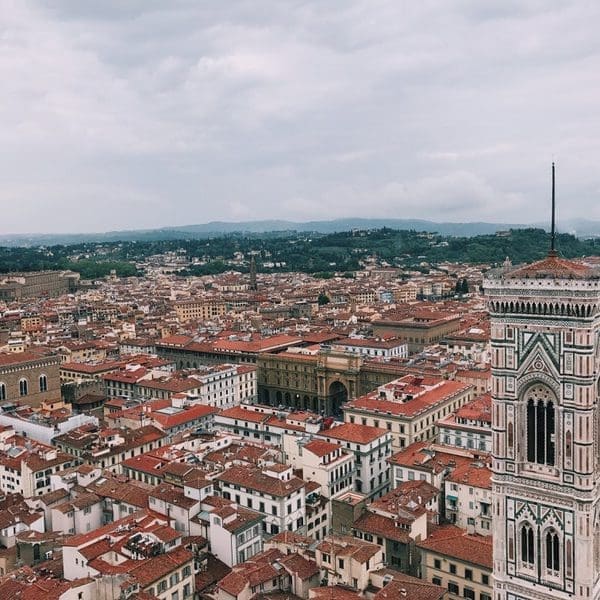How long should I go for?
Art, architecture and Italian cuisine at its very best, Florence is one of the most magnificent cities in the world. You’ll need at least two nights here as there’s heaps to keep you busy with ?
Getting there:
Florence is easily accessible from all over Europe and it’s no wonder, given that it was voted as Europe’s favourite city in 2016. Modern, fast trains connect you with many Italian cities including Milan, Rome and Pisa and there are also day trains to neighbouring countries. If you are flying in/out of Florence then there are many options and airlines who fly to Tuscany.

When visiting Florence, one piazza you can’t miss is Piazza del Duomo. At the heart of the city, its main landmark is the iconic Santa Maria del Fiore Cathedral. Built over 140 years between the 13th and 15th century, its dome remains the largest brick dome ever built.
The Uffizi gallery is one of the most important Italian museums. It houses part of the impressive art collection of the former ruling house of the Medici. One of the key works displayed in this museum is The Birth of Venus by Sandro Boticelli.
If you want to see Michelangelo’s famous ‘David’, you’ll have to go to the Gallerie dell’Accademia. Originally meant for the roof of Florence Cathedral, the ‘David’ was first displayed outside the Palazzo Vecchio before being moved to the gallery. A replica has now replaced it on the public square.
The palace was known as the Palazzo della Signoria until the Medici’s residence was moved to the newly built Palazzo Pitti. Today, the “Old Palace” is Florence’s town hall, open to the public. The palace will amaze you. Begin your tour at the entrance where a replica of the David stands next to Hercules to welcome you inside. Beyond that you’ll find courtyards, apartments, engraved doors, painted ceilings and sculptures, all designed with the sole aim of impressing visitors!
The Ponte Vecchio is a famous landmark of Florence. Originating in the 14th century, the “Old Bridge” was spared from WW2 bombings and survived several floods of the Arno river. Jewelers, art dealers and souvenir shops have replaced the butchers, farmers and tanners of ancient times.